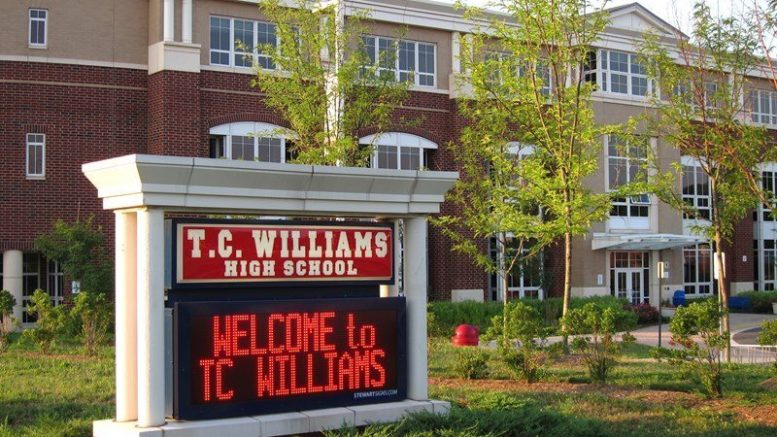By Griffin Harris
Since the “Unite the Right” rally in Charlottesville a couple weeks ago–which culminated in inflammatory, racist remarks from the President, violence (not on both sides!), and a renewed outrage about the treatment of black Americans–the question of historical preservation has been hot. Or, rather, the question of glorifying racism under the guise of ‘historical preservation’ has been hot.
The protest that set off this national discussion was an effort to halt the removal of a statue of Robert E. Lee that stood in Emancipation Park in Charlottesville, Virginia. The protesting crowd (not counter-protesters, mind you) consisted largely of white supremacists, whose on-video chanting of “Jews will not replace us” while marching with torches and Confederate and Nazi flags has become notorious. One of the protesters also, in his effort to preserve America’s rich cultural history, drove a muscle car into a crowd of counter-protesters, killing one.
The bigoted, hateful and, most alarmingly, congealed actions of these protesters only emphasized the need to replace or remove monuments–like the statue of Robert E. Lee in Emancipation Park–that romanticize America’s history of racism and oppression. My hunch is that in Alexandria–the part of a Congressional district that hasn’t voted red since it re-elected Stanford Parris in 1988–most people would agree that such symbols are offensive and in violation of community values.
And yet it is Alexandria that is home to some of those very symbols. Of course, the statue and traffic hazard of a morose Confederate soldier facing south that stands in the middle of Prince Street and Washington Street is always mentioned around this issue. An effort to rename our stretch of Route 1–now called “Jefferson Davis Highway” after the President of the Confederacy from 1861 to 1865–has gained popularity. And the Fairfax County School Board voted this past summer to rename the nearby J.E.B Stuart High School, whose namesake was a Confederate General. But the too-often overlooked mark of Alexandria’s placement below the Mason-Dixon is in the name of its sole public high school: T.C. Williams.
Thomas Chambliss Williams was the superintendent of Alexandria City Public Schools from the mid-1930s to the mid-1960s. During his three decade tenure, the country emerged from the Great Depression, thousands of Americans went to fight militarism and fascism across the Atlantic, and the Civil Rights movement gained momentum. It is on that last point that the naming of T.C. is controversial: Williams openly advocated for racial segregation within Alexandria schools.
After the order on May 17, 1954 for ACPS to be desegregated, Williams resisted for five years. One Washington Post article from the early 1990s about Williams says that in 1958 he fired a black cafeteria worker because her children were seeking admission to one of the remaining all-white city schools. He was a racist.
For a school with a student body that, according to September 2016 statistics, is 36 percent Hispanic, 29 percent black, 27 percent white, 4 percent Asian and 4 percent “other,” and for a school whose students speak over 70 languages, Thomas Chambliss Williams is no appropriate namesake. Indeed, for a school whose athletic hall boasts a banner from the film Remember the Titans (which, of course, tells the heartwarming story of a newly integrated football team that learns to care more about wins and brotherhood than race–the kind of geniality that Williams would not stand for) “T.C”. is an embarrassing mistake.
Through Alexandria there are hundreds of signs that prove how misfitting it is to name this high school after a racial separatist. In Del Ray, yard signs everywhere say, “No matter where you are from, we’re glad you’re our neighbor” (that’s also written in Spanish and Arabic on the sign), “Reject Hate”, “Black Lives Matter” or, still, Hillary Clinton/Bernie Sanders 2016.
It is no great leap, then, to say that the racist Thomas Chambliss would not embrace today’s Alexandria if he were alive to see it. So why should we embrace him?
The most common and most farcical response to the removal of these statues is that those doing it are trying to ‘erase history.’ First, actually subscribing to this belief is not for the rational mind; it is for paranoid, conspiracy-theory sleuths who also thought that Kenyan-born Obama was trying to take away their guns. Second, the entire argument rests on a misunderstanding. Progressives are not trying to erase or revise history; they are trying to avoid making heroes out of villains. There is a great difference between remembering someone–say, Thomas Chambliss Williams or Robert E. Lee–and glorifying them. To record their life in books, museums, and films is to remember them, and it is necessary if we are to revisit and learn from history. But to erect statues to and name institutions after these men is to ignore the mistakes of our past.
Thomas Chambliss Williams was not an exemplar, and he should be a difficult part of Alexandria’s past–not a proud one. The name of this high school ought to be changed to something more edifying and more fitting.
The question then comes: If “T.C. Williams” is discarded, who or what will replace it?
It is easier to criticize than to create, and I find myself facing that now. So, I ask that readers of this article submit ideas for possible name changes to tctheogony@gmail.com or bring their written proposals to A202 at the King Street campus of, alas, T.C. Williams. Theogony is eager to hear from its readers on this important issue.

